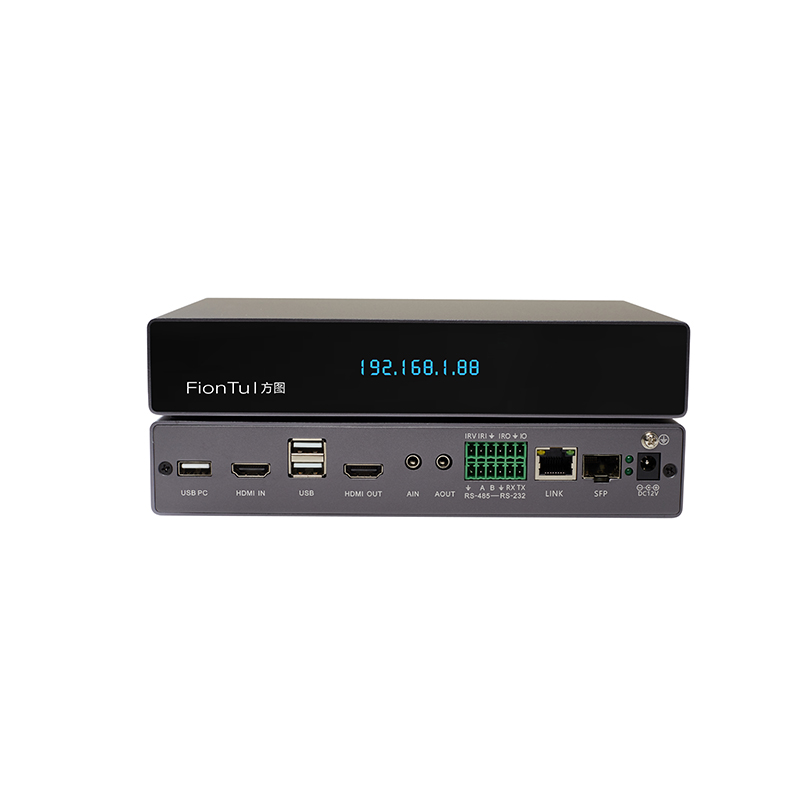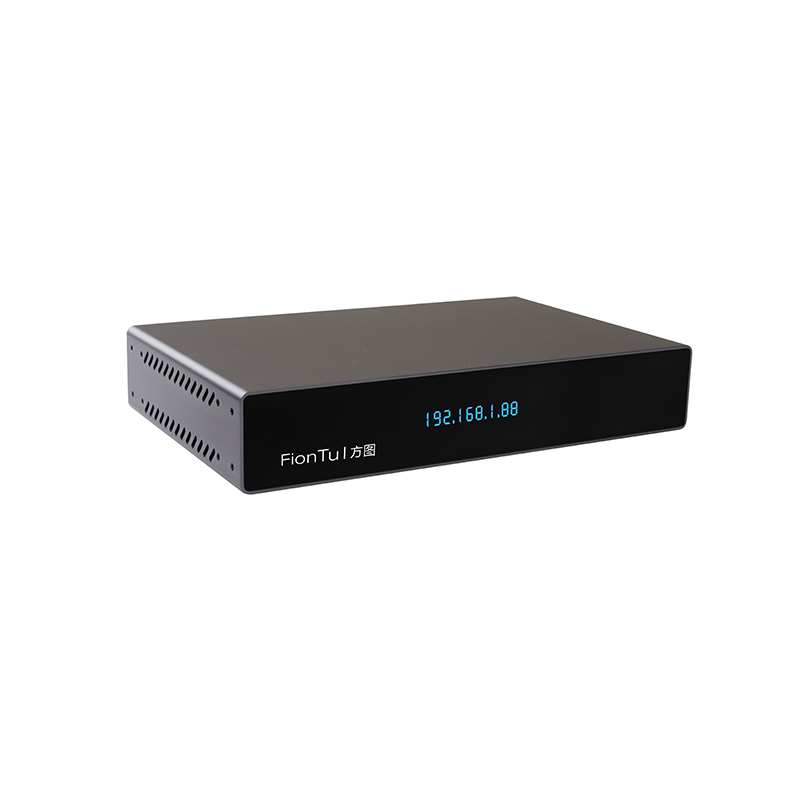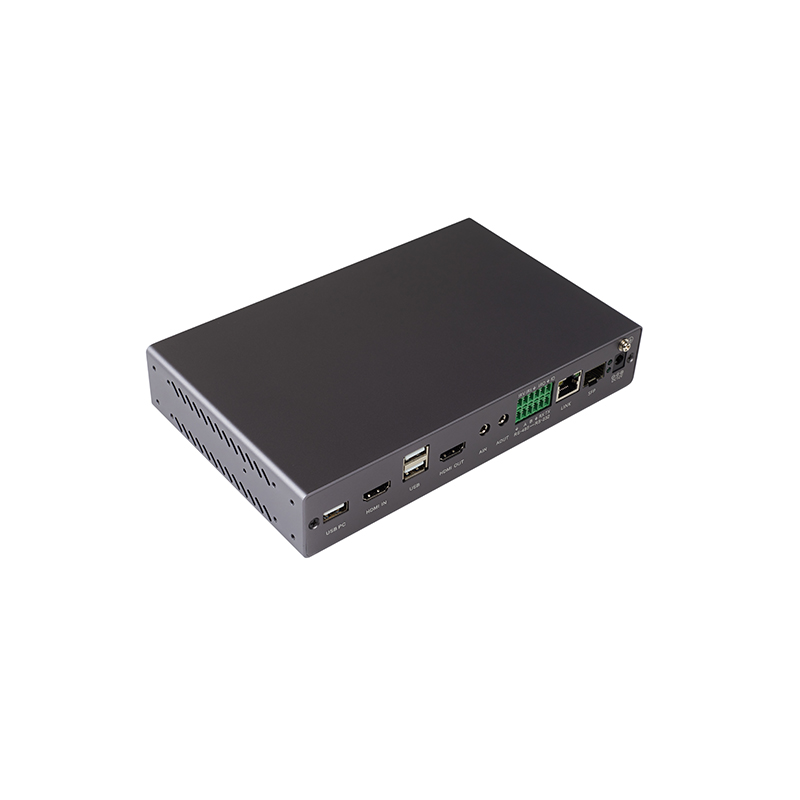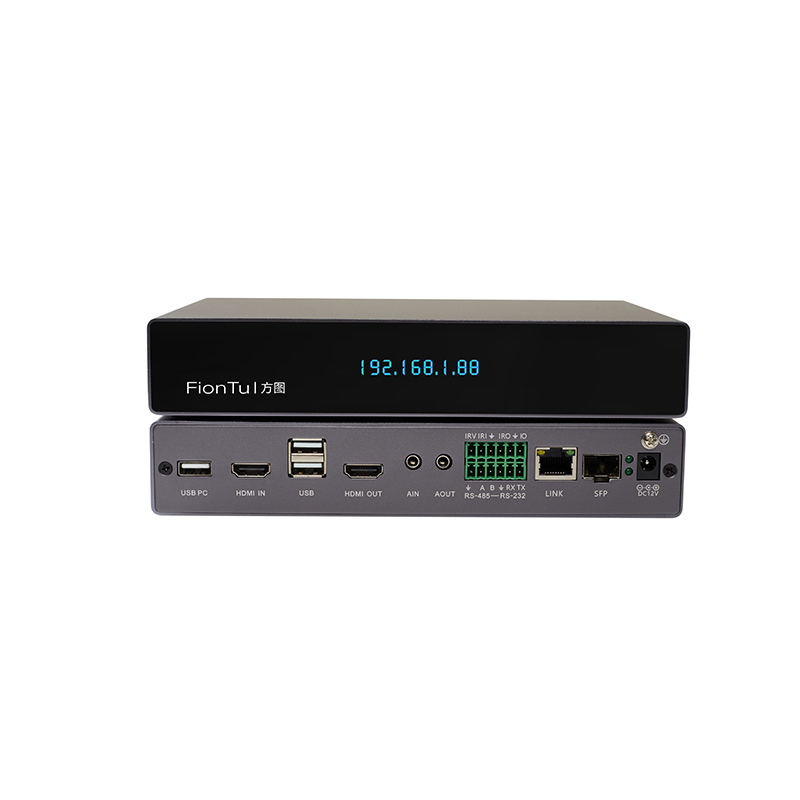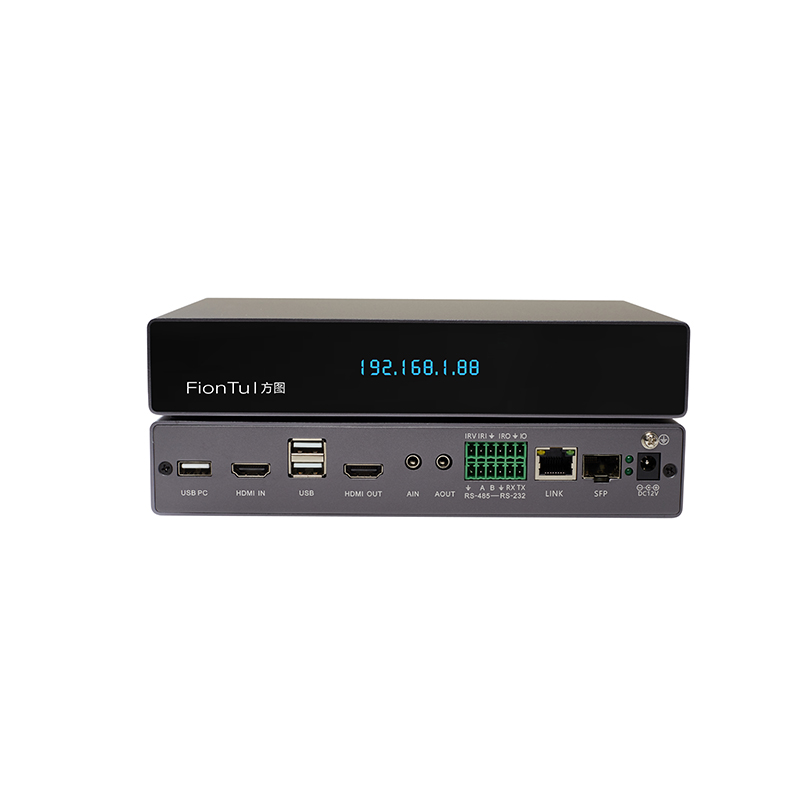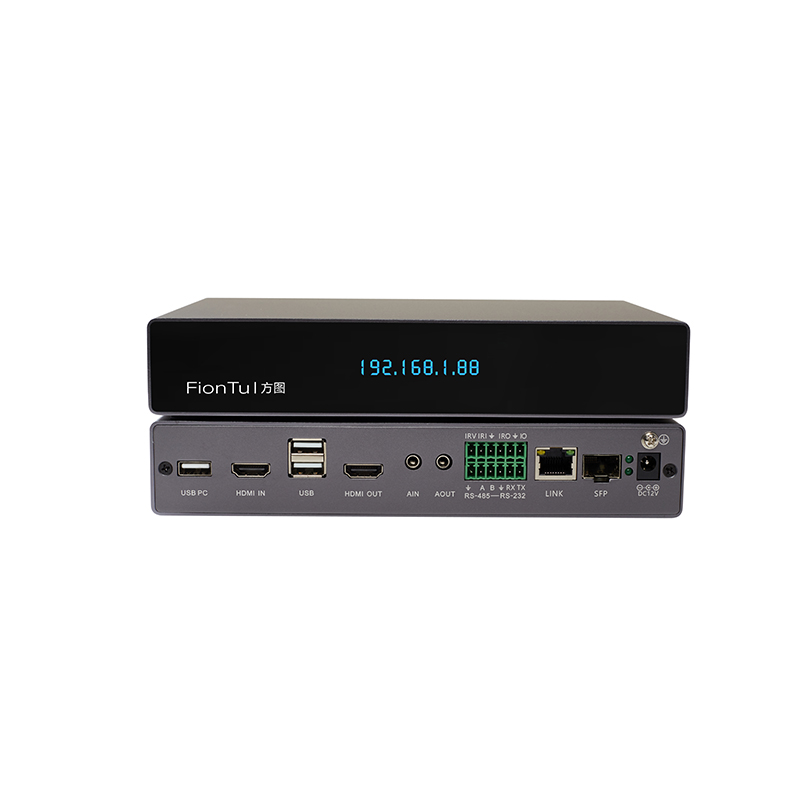FT-CN2KO-F is a product that integrates splicing, display, control, recording, and broadcasting functions. It integrates high-performance video processing and splicing display, multi-screen multi-location centralized management, remote signal source sharing, massive streaming media access, dynamic ultra-high resolution point-to-point display, streaming video recording and playback, environmental management, external device control and other functions. It can meet the needs of various industries such as security, command, transportation, public safety, energy, education, and conferences It adopts Linux system distributed architecture design and decentralized architecture. It can expand any number of nodes without servers and master nodes. Each node is independent and Interference with each other, reduce system operation risk, and reduce maintenance costs Fanless silent design, supports independent installation in 1U cabinet or installation of 2 units side by side at the same time Each node unit uses H.265 data stream codec chip and is backward compatible to ensure the smooth operation of the system Video input: support RTSP, RTMP protocol, private protocol, 2-way HDMI, embedded audio synchronous or asynchronous input, support port backup; support 1-way encoding, 1-way HDMI loop output Audio input: support AAC, G.711.G.726, private protocol, support CBR/VBR, support frame rate adjustable 1-60fps , audio input interface, embedded audio synchronous or asynchronous input, supports volume adjustment, supports synchronous, asynchronous and mixing modes; supports multi-channel audio mixing playback, and lossless sound quality With 1 power indicator, 1 video signal indicator, 1 network status and signal transmission status light, 1 factory reset button, 3 USB 2. 0 interfaces, 1 Gigabit network port, 1 Gigabit optical port, 2 HDMI video input and output interfaces, 2 3.5mm audio input and output interfaces, 1 RS232 interface, 1 RS485 interface, 3 IR/IO Each node has ≥3 USB ports for connecting to computers, KVM function can be realized without adding additional hardware Supports output signal with a maximum resolution of 1920*1080@60Hz, backward compatible, supports custom resolution, range: 360x240~1920*1080 Supports fixed bit rate transmission, adjustable range 128kbps~40Mbps Supports unicast and multicast Supports H.264 and H.265 IPC encoding cameras, IPC network camera signal access directly output to the large screen, no third-party transcoding server is required, and supports pan/tilt zoom, zoom out, left and right rotation, etc. Supports push of large screen by the seat end, and can be sent by the local seat Any video source in the list is pushed to the local or remote splicing large screen for full-screen display, which can be opened, roamed, superimposed, drawn, etc., and the signal source and virtual screen can be previewed in real time When opening the large screen window, it can open regular windows such as 2*2 and 3*3, and it also supports irregular window opening by manually dragging and randomly splitting the window layout Support seat video voice intercom and text chat, and seats can directly communicate one-to-one through video, voice and text; support broadcasting between seats, seats can talk one-to-many, and seats can speak to the entire hall environment Support multi-party conference mode, support ≥16 operators to enter the conference interface, and support 16-channel mixing, and participants can be added and removed at any time during the meeting Supports pre-operation mode on the agent side, supports layout in the virtual screen area, the picture adjustment process will not be displayed in real time on the large screen, when the push screen button is clicked, the adjusted layout can be displayed on the screen with one click to prevent misoperation Supports remote KVM control, the agent side can remotely control the computer in the computer room and switch it on and off, and can control up to 16 windows of different signal sources at the same time; has manual and automatic start control modes Supports mutual signal request and push between agents; supports three-level authority management; supports signal capture of large screens; supports large screen partition management; supports agent side and large screen plan saving and retrieval Supports multiple login methods (account password, fingerprint, face recognition login), with seat memory function, agents are not limited to the current seat, and the original layout is retained when logging in at any seat, without the need to re-layout Supports message queue prompts on the seat side; signal up and down, other message delivery and other reminders Supports OSD top and bottom menu bars, and can complete all tasks such as screen push, seat push, takeover, control, request, visual intercom, etc. with just the mouse, with computer-like operation experience, and can also support shortcut key operation The system scene can provide a one-key recovery function; the node device has programmable storage capabilities, and can automatically restore the system to the state before power failure after power failure and restart, such as: volume, large screen switch, signal position, lighting environment, etc. Supports local viewing of node status by seats, and can view the version information of its own node, device IP, server IP, CPU and memory usage, network rate, running time, etc. without mobilizing other software Supports distinguishing channel status modes by channel frame color, including takeover, control, reception, no signal and other border colors, each border has no less than 11 color options, supports changing the width of the signal frame, and supports up to 3px. The border can also be hidden Supports setting the position and size of the floating ball of each signal channel. The position information includes three settings: low, medium and high. The size includes three settings: large, medium and small. It can be set according to the operator's habits Supports OSD superposition display of device name, time, station logo, etc.; supports dual station logos, and can modify the station logo in text Supports node LCD status display, which can display node name, IP address, operating status, etc. Supports automatic identification of EDID extended display logo, supports HDCP 30. Supports

